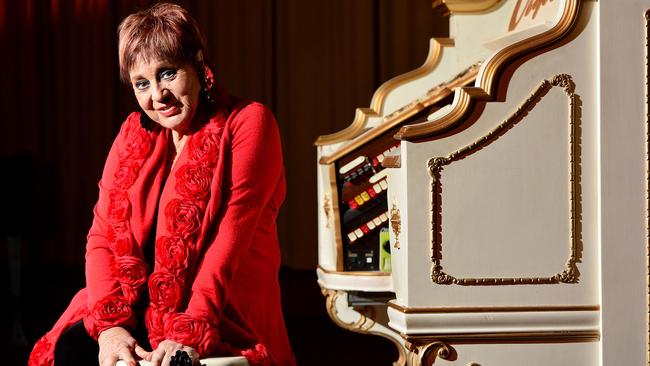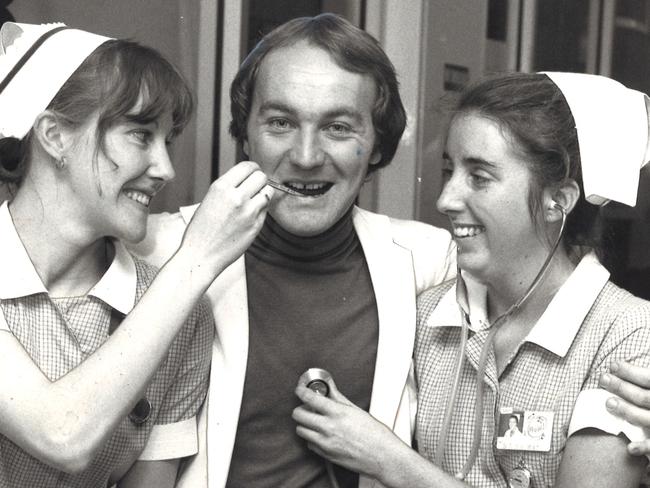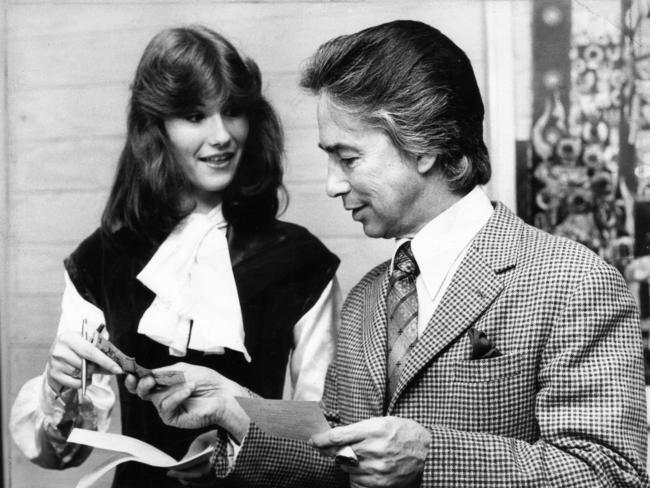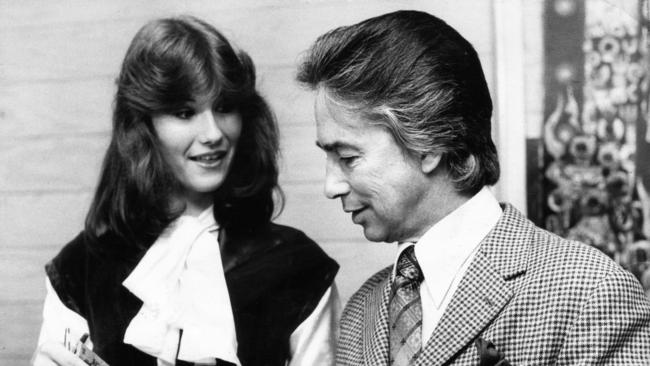Telethon SA to close after almost 60 years raising money for charities
UPDATE: Iconic charity Telethon SA has been thrown a couple of lifelines — including a Rivergum home for its house-and-land lotteries — after it revealed it was closing because of rising costs.
READ BELOW: Serious appeal — and star power
ICONIC charity Telethon SA has been thrown a couple of lifelines today — including a Rivergum home for its house-and-land lotteries — after it revealed it was closing after nearly 60 years because of rising costs.
The charity has blamed the rising costs of running its home-and-land lottery — which has raised more than $28 million for SA charities — on the decision to close after 56 years.
Chairman Neil Smith also described the State Government land agency Renewal SA’s decision not to donate land for Telethon SA’s enduring home-and-lottery prize as “breaking the camel’s back”.
But the charity, which was famous for television appeals in the 1960s and ‘70s on Channel Nine, has now been offered free land from the State Government and a free house from Rivergum Homes.
A Rivergum Homes spokesman said the company “couldn’t sit back and let this iconic local charity go under”.
“It is our pleasure to be able to make an offer to donate one of our homes to help ensure Telethon SA continue their good work in this state,” he said.
“We will work through the finer details with Telethon SA and the State Government to help ensure a new generation of South Australians benefit from this wonderful organisation.”
State Opposition Leader Steven Marshall this morning said Renewal SA’s decision was “absolutely disgraceful”. “It seems it’s got its priorities completely wrong,” he told ABC Adelaide.
Later this morning the Government caved to pressure, with Housing and Urban Development Minister Stephen Mullighan offering the charity a possible lifeline.
“The State Government through Renewal SA has been a strong supporter of Telethon over many years. The same offer that was made for last year’s lottery, which raised $953,320 and supported 14 South Australian charities, was offered again this year,” Mr Mullighan said.
“Learning about Telethon’s plans to close down, the State Government has made an offer to provide land at no cost. We hope this will assist Telethon continue to do the fantastic charity work they have done for over 50 years.”
This afternoon, Rivergum Homes also came to the party with an offer of a free home for the charity’s popular house-and-land lottery.
Telethon had received free land for its annual lotteries until two years ago, when Renewal SA began charging for land at a 10 per cent discount.
The land agency had again required a financial contribution from the charity and has only offered the land for free after hearing news of its impending closure.
Mr Smith said the Government’s land offer was “a help and it’s appreciated” but could not say if it would be enough to save the operation.
“This is a welcome offer but whether its too late, we will have to consider that,” he said.
Mr Smith said the Telethon board would discuss the offer in coming days.
Earlier, he told The Advertiser said there were many factors that led to the “very difficult decision” to close the charity this year — but none more so than the “economic climate”.
“We are extremely proud of everything we have achieved supporting South Australian charities,” he said.
“During this time more than $28 million has been raised through the Home and Land Lottery.
“Regrettably, the high cost of running this flagship project proved too great a risk for Telethon SA.
“We have had fantastic support from not just the public but also from suppliers and sponsors; it’s why we’ve been managed to be effective fundraising for SA charities for more than 50 years — we’re sorry we can’t continue.”
Last year’s lottery prize was a house built at Renewal SA’s Playford Alive estate in Munno Para.
Mr Smith said the charity was unable to get the land “without paying for it”.
“We’ve been fortunate to have a number of supporters for (donating) land over the years ... but I think the straw that broke the camel’s back was we were not able to get the land at the Renewal SA development without paying for it and that was the end of our (financial) reserves,” he said.
“To keep going we just didn’t have sufficient resources to take that chance.
“We’ve got a very responsible board, they take their responsibilities seriously, and you can imagine the reluctance (to close) but we also have to be prudent and do the right thing.”
Renewal SA chief executive John Hanlon said it had been the only organisation providing land to the telethon in the past few years.
Renewal SA had been a sponsor of the telethon for several years but in 2016 had restructured its sponsorship, he told FIVEaa this morning.
Mr Hanlon said he was unaware of telethon financial predicament and “had we known that, we would have reconsidered our arrangement with them”.
“I’m sure today we will have discussions with some people and see what can be done,” he said.
Telethon was famous for bringing together celebrities and TV personalities to help raise funds for worthy organisations.
Anne Wills — SA’s enduring radio and television personality — first entered the Telethon Quest in 1963 as a fresh-faced 19-year-old.

She said news of its downfall was “very sad’’.
“I’m surprised it hung on as long as it did,” she said. “But now that I’m 72, I know nothing lasts forever.’’
“Willsy’’ said Telethon became “an institution’’ to South Australians over five decades and gave her the biggest break in her career.
“There were other quests going but Telethon seemed to have a highly-respected name as far as we were concerned,’’ she said.
“If it hadn’t been for the Telethon Quest, I never, ever would have got my break on TV, so to me it means everything.
“The fact that it was raising money to look after Minda Home, that in itself was just brilliant. Even these days there’s not enough money to look after people who need help.”
Telethon SA is not affiliated with the Channel Nine Team Kids’ Easter Appeal for the Women’s and Children’s Hospital.
Mr Smith said TelethonSA — which is not affiliated with Channel Nine and Team Kids Easter Appeal for the Women’s and Children’s Hospital — would close this financial year.
“I think you’ll find any charity in SA, indeed in Australia will tell talk about how difficult the fundraising conditions are,” he said.
“Having said that last year was our second best (fundraising) total on record.”
The 2016 home and land lottery raised $955,000 last year supporting 14 charities including RSL, disability services provider Cara, Childhood Cancer Association, Special Olympics South Australia and Australian Refugee Association.
TelethonSA general manager Pamela Howells said increasing costs to subsidise the appeal prizes meant it was “too great a risk” to continue.
She said over the past two years the charity had contributed almost $250,000 towards house and land costs — not including overheads — and that was “too high”.
“The house and land lottery is a flagship project and up until two years ago we were able to get the house and land completely donated,” she said.
“But because of the economic climate, our supporters can’t continue to keep up that level of contribution.
“We were not in a situation of being broke but it is a situation where the board says we have to quit while we are ahead.”
Serious appeal and star power
By Jill Pengelley
TELETHON will be remembered for the decades of excitement it brought to generations of South Australians, as well as for the millions of dollars it raised for local charities.
The not-for-profit organisation started in 1961, joining with Channel 9 for a marathon TV appeal for donations from viewers.
Celebrities manned the phones, taking pledges from callers and providing variety entertainment to while away hours usually occupied by a test pattern.
Although hosted by Channel 9, the Telethon was supported by stars from other networks, including performers and actors who would fly in from interstate.

Humphrey B Bear, Ernie Sigley, Bobby Limb, soap stars and children’s TV hosts were frequent and popular supporters of the Telethon.
In the early days, viewers who promised to donate could send cheques or go the Savings Bank of SA, which opened in the evening, and again on Saturday morning, to take cash during the appeal.
Telethon also expanded to operate the Miss Telethon beauty quest, which was won in 1964 by Adelaide identity Anne Wills; and the House of Hope house-and-land lottery.

In the 1960s, before it became a lottery, people paid to guess the value of the house and the closest estimate won.
In 1966, however, one entry was 1c over and another was 1c under. Both entrants were then asked to guess the retail value of a wall plaque to determine a winner.
The TV appeals ceased in the late 1980s but Telethon SA continued a range of other fundraisers.
In the first 35 years, Telethon raised more than $14 million for 40 charities, and last year reported that it now supported more than 20 not-for-profit organisations each year.
It said many of the organisations were large and small charities which received little other support.

